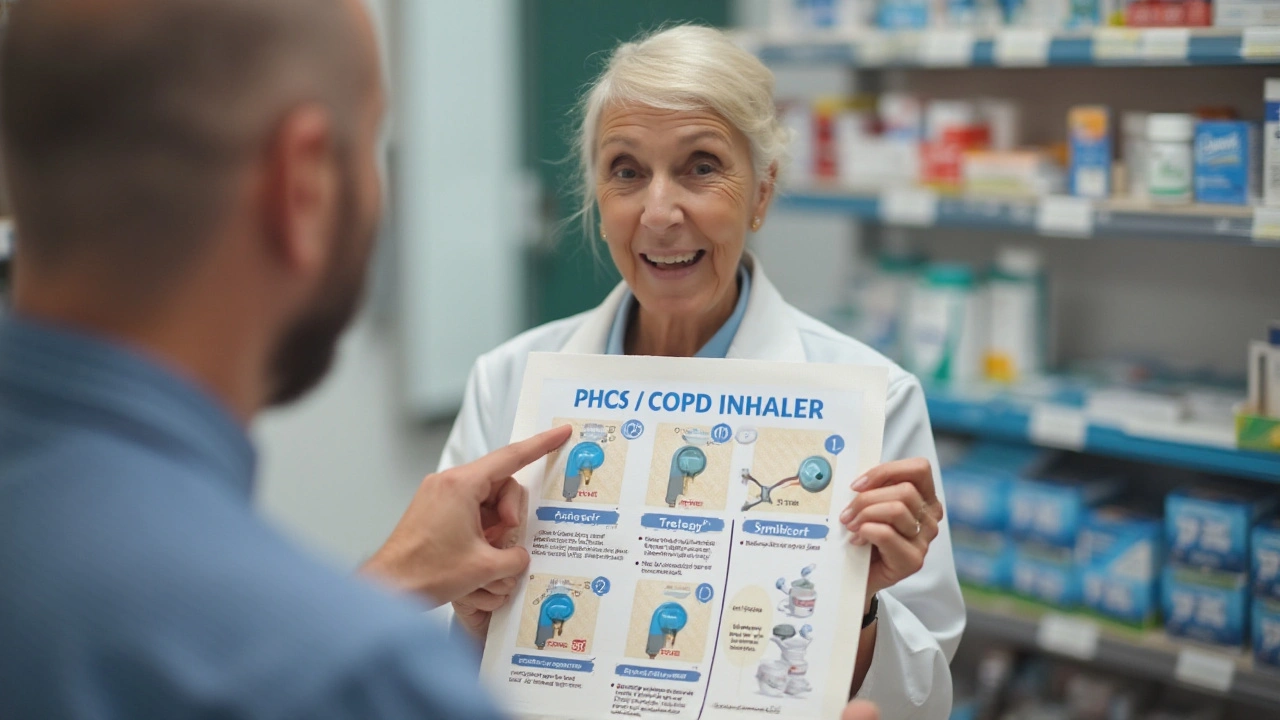Inhaler options: which one fits your breathing needs?
Choosing an inhaler feels confusing, right? There are metered-dose inhalers (MDIs), dry powder inhalers (DPIs), soft-mist inhalers, and nebulizers. Each works differently and suits different people. Below I’ll break down what they do, who they help most, and simple tips so you get the full dose the first time.
How inhalers differ
MDI (metered-dose inhaler): This is the classic canister you press. It sprays a measured puff of medicine (often albuterol or an inhaled steroid). Pros: compact, fast. Cons: you need to time your breath with the spray — many people miss the dose without a spacer.
DPI (dry powder inhaler): You load or twist the device and inhale sharply to pull powder into your lungs. Pros: no coordination needed between spray and breath. Cons: you must be able to inhale fast and hard; not great for small kids or during severe attacks.
Soft-mist inhaler: Makes a slow-moving mist you inhale. It delivers medicine smoothly and needs less coordination than an MDI. It’s a common choice if you struggle with MDIs and DPIs.
Nebulizer: Turns liquid medicine into a fine mist through a machine. You breathe normally through a mask or mouthpiece. Nebulizers are bulky and slower, but they’re great for infants, older adults, or people with very weak inhalation.
Practical tips to pick and use an inhaler
Ask what medicine is inside first: short-acting bronchodilators like albuterol are rescue inhalers for sudden symptoms. Inhaled corticosteroids, LABAs (long-acting bronchodilators), or combination inhalers are for daily control. If you need quick relief, the device should be one you can use fast and reliably.
If you use an MDI, get a spacer. A spacer makes timing easier and sends more medicine into your lungs, not your throat. For MDIs: shake the can, exhale, press once while starting a slow deep breath, then hold for about 10 seconds. For DPIs: exhale away from the device, inhale forcefully and hold 10 seconds. If you can’t manage a strong inhalation, skip DPI.
Keep tabs on the dose counter and cleaning. Rinse mouth after steroid inhalers to cut down thrush risk. Replace or clean nebulizer parts per instructions — a dirty kit reduces dose and raises infection risk.
Price matters: many inhaler medicines have generic options. If cost is a problem, ask your pharmacist about cheaper brands, coupons, or patient-assistance programs.
When to see a clinician: if you’re using your rescue inhaler more than twice a week, waking at night from symptoms, or your inhaler technique feels awkward — talk to your prescriber. They can switch device type, change the medicine, or offer a spacer or training.
Bottom line: match the device to your breath strength, age, and daily routine. Try the device with a nurse or pharmacist once before you rely on it — a few minutes of practice saves trips to the ER later.

